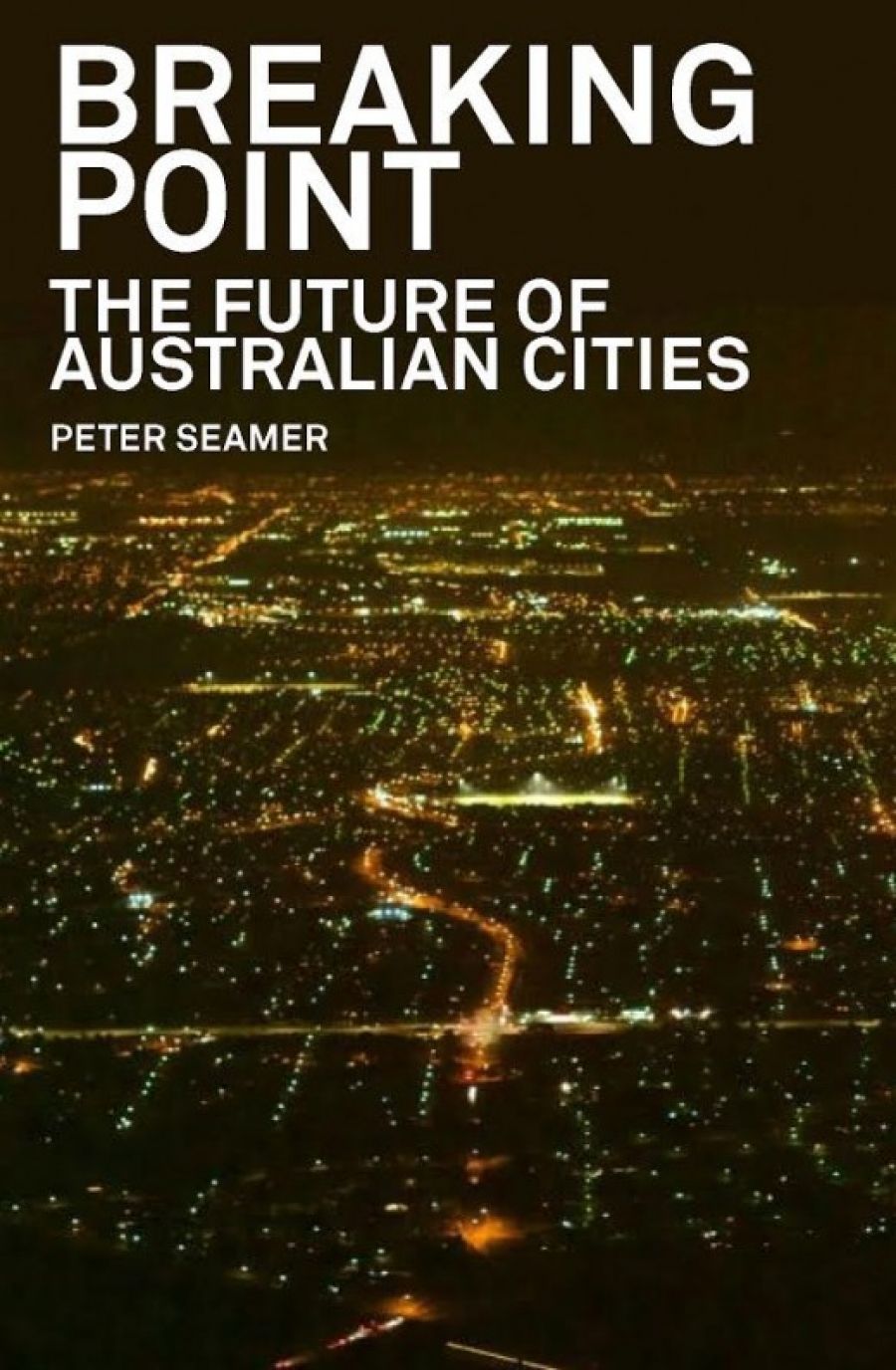
- Free Article: No
- Contents Category: Society
- Review Article: Yes
- Custom Highlight Text:
In Breaking Point: The future of Australian cities, Peter Seamer quotes satirist H.L. Mencken: ‘There is always an easy solution to every human problem – neat, plausible, and wrong.’ Seamer, a former CEO of the Victorian Planning Authority, Federation Square, and the City of Sydney ...
- Book 1 Title: Breaking Point
- Book 1 Subtitle: The future of Australian cities
- Book 1 Biblio: Nero, $32.99 pb, 256 pp, 9781760641290
An impediment to more effective planning, according to Seamer, is the excessive focus on city centres, especially in Melbourne. The conventional view is that the Central Business District and its immediate environs are the engine of economic growth and the locus of urban life. Infrastructure investment is often skewed toward providing radial transport links by road and rail to and from the CBD. Owing to the success of the Postcode 3000 project in the 1990s to regenerate Melbourne’s city centre, the CBD has also become a major residential zone. Once known for its drab emptiness after five o’clock, central Melbourne is now the focus of government, sporting, and cultural institutions, media, business, finance, tertiary education, retail and food culture, and has around 29,000 apartments (up from 685 in 1985).
While transport and other infrastructure to support this urban efflorescence aim to get people to and from the centre of town, the reality is that most people do not work in the CBD. Eighty per cent of all jobs in Melbourne are located in the suburbs, and around half of those in employment live in the same area in which they work. Urban development needs are therefore local, and do not radiate out from the CBD as much planning and infrastructure investment supposes. Although popular, the introduction of the free-travel zone in the Melbourne CBD is emblematic of the failings of centralisation. With the loss of around one hundred million dollars annually in uncollected revenue, this is a service for those who are already most able to pay. The free-travel zone also discourages active transport by bike or on foot, and is a lost opportunity to invest in outer suburbs that are poorly served by public transport.
 An early-morning view of Melbourne (photograph by Roberto Seba)
An early-morning view of Melbourne (photograph by Roberto Seba)
Instead, Breaking Point advocates for the concepts of amenity, localisation, and polycentric cities by reducing the need to venture far. Polycentric cities aim to promote proximity between work and home, the use of public transport, and the reduction of travel times and congestion. Shops, hospitals, schools, workplaces, sporting facilities, and cultural institutions (clustered as the concept of ‘amenity’) need to be accessible from areas where most city inhabitants live: the suburbs. This would ensure equitable provision of infrastructure, or access and opportunity, across the entire city, not just the centre and nearby suburbs. New transport technologies reinforce the need to plan for a polycentric city. Autonomous vehicles have the potential to revolutionise public transport, promoting suburban movement in a number of different directions rather than the radial limitations of existing infrastructure. More sophisticated pricing mechanisms (like those already used by Uber) will encourage local, shared, and non-peak travel.
Polycentric cities can, in Seamer’s view, be achieved through encouragement. Differential fares could encourage passengers to use travel infrastructure at non-peak times; changes in communication technology might encourage more people to work from home; more open-minded planning that mixes business and residential zones might help develop local hubs. Hubs around Monash and La Trobe universities, for example, are undermined by a lack of wider amenities and poor transport connections. Similarly, investment in regional growth, at a fraction of the cost of metropolitan rail projects, would support the principle of polycentric planning at a national level.
Breaking Point concisely captures the complexity of planning for Australia’s cities, about which many have strongly held views and which spark debates. Will beneficent ‘nudges’ really be sufficient to accommodate population growth? Expensive as it is initially, rail advocates will point to London, Tokyo, Moscow, Paris, etc. as the best examples of providing mass transit. Despite advances in autonomous vehicles, these are still cars and they will still clog roads and produce emissions. Conservationists will question Seamer’s support for developers and for cutting ‘red tape’, some of which also protects the liveability and heritage of Australia’s cities. There is very little discussion of sustainability or climate change and urban futures, and this is perhaps the book’s most significant omission. The aim, however, is to ‘start a discussion’, and Breaking Point does this very effectively.


Comments powered by CComment